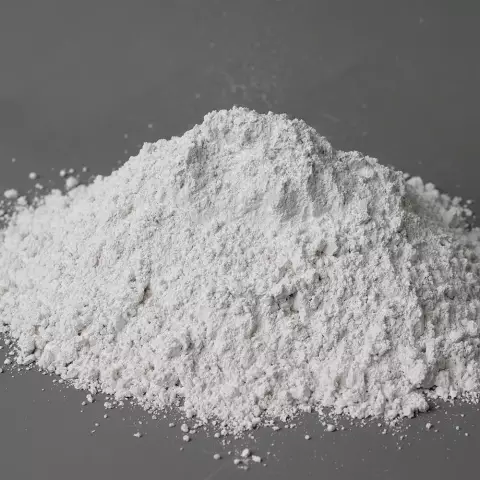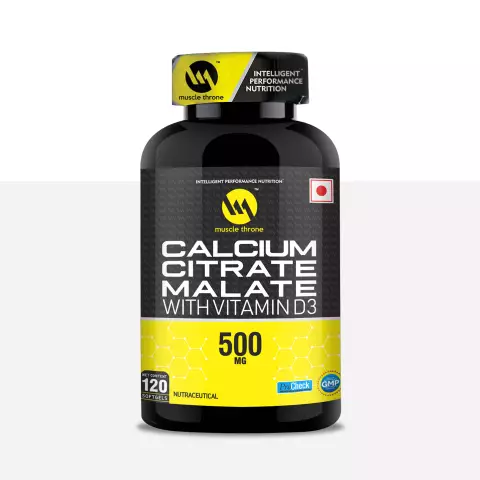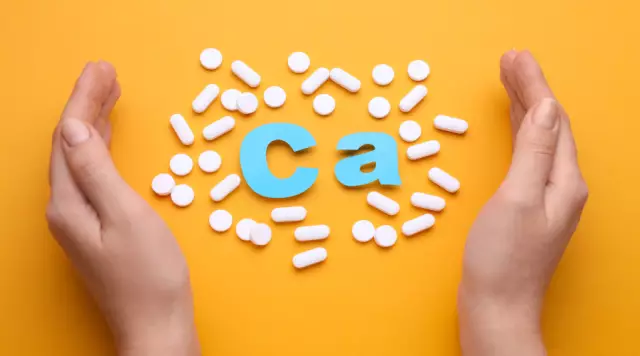- Author Rachel Wainwright [email protected].
- Public 2023-12-15 07:39.
- Last modified 2025-11-02 20:14.
Ostalon Calcium-D
Ostalon Calcium-D: instructions for use and reviews
- 1. Release form and composition
- 2. Pharmacological properties
- 3. Indications for use
- 4. Contraindications
- 5. Method of application and dosage
- 6. Side effects
- 7. Overdose
- 8. Special instructions
- 9. Application during pregnancy and lactation
- 10. Use in childhood
- 11. In case of impaired renal function
- 12. Drug interactions
- 13. Analogs
- 14. Terms and conditions of storage
- 15. Terms of dispensing from pharmacies
- 16. Reviews
- 17. Price in pharmacies
Latin name: Ostalon Calcium-D
ATX code: M05BB03
Active ingredient: colecalciferol + calcium carbonate; Alendronic Acid (Colecalciferolum + Calcium Carbonate; Acidum Alendronicum)
Manufacturer: BERESH Pharmaceuticals, Co. Ltd. (BERES Pharmaceuticals, Co. Ltd.) (Hungary); Gedeon Richter Poland, Co. Ltd. (Gedeon Richter Poland, Co. Ltd.) (Poland)
Description and photo update: 2019-29-10

Ostalon Calcium-D - a combined drug for the treatment of osteoporosis; an inhibitor of bone resorption (bisphosphonate) and a regulator of calcium-phosphorus metabolism (vitamin D 3 + calcium preparation).
Release form and composition
Ostalon Calcium-D dosage form - film-coated tablets, in a set of two types - colecalciferol 400 international units (ME) + calcium carbonate 1500 mg and alendronic acid 70 mg:
- colecalciferol + calcium carbonate: oblong, pale, brownish yellow, on one side there is a dividing line; the tablet core is white in cross section;
- alendronic acid: biconvex, round, white, one side engraved with "M14".
Packing: in a cardboard box 2 blisters with 14 tablets of colecalciferol + calcium carbonate and 1 blister with 4 tablets of alendronic acid, or in a cardboard box 6 blisters with 14 tablets of colecalciferol + calcium carbonate and 3 blisters with 4 tablets of alendronic acid. Each pack also contains instructions for the use of Ostalon Calcium-D.
Composition for 1 tablet of colecalciferol + calcium carbonate:
- active substances: colecalciferol powder - 4 mg (in terms of colecalciferol - 0.01 mg, which corresponds to the content of vitamin D 3 - 400 ME; calcium carbonate - 1500 mg (corresponds to the content of calcium carbonate powder - 1578 mg, which in terms of calcium is 600 mg);
- auxiliary components: corn starch - 0.642 mg; sucrose - 1.52 mg; gelatin - 1.52 mg; soybean oil hydrogenated - 0.3 mg; d, l-α-Tocopherol - 0.008 mg; colecalciferol - 0.01 mg; polysorbate 80 - 2 mg; maltodextrin - 76 mg; magnesium stearate - 4 mg; crospovidone - 8 mg; copovidone - 17 mg; crystalline cellulose - 39 mg;
- film shell: sepifilm 4202 yellow [titanium dioxide (E171) - 5-15%; talc - 10-20%; macrogol - 10-16%; hypromellose - 55-65%; iron dye yellow oxide (E172) - 5%] - 50 mg.
Composition for 1 tablet of alendronic acid:
- active substance: alendronic acid - 70 mg (in the form of sodium alendronate trihydrate - 91.35 mg);
- auxiliary components: magnesium stearate - 2.62 mg; croscarmellose sodium - 1.28 mg; colloidal silicon dioxide - 3.5 mg; microcrystalline cellulose - 261.25 mg;
- shell: Lustre Clear LS 103 (macrogol 8000 ≈ 38%; carrageenan ≈ 18%; microcrystalline cellulose ≈ 44%) - 1 mg.
Pharmacological properties
Pharmacodynamics
Ostalon Calcium-D is a combination drug. Its pharmacological actions are due to the active substances contained in a set of tablets of two types:
- alendronic acid (bisphosphonate): penetrates into areas of active bone destruction and inhibits the resorption process. At the same time, it has no direct effect on the formation of new bone tissue, due to which the bone mass increases. Taking therapeutic doses of alendronic acid does not lead to osteomalacia, but serves to form normal bone tissue;
- Calcium Carbonate: The calcium it contains is an essential element and plays a key role in the electrolyte balance. It is necessary for blood clotting, nerve impulses and muscle contraction, provides control over various metabolic processes and the transmission of intracellular signals. The calcium present in the body is 99% contained in bone tissue and is its main inorganic component;
- colecalciferol: regulates the concentration of calcium in the blood plasma, increases the intestinal absorption of phosphates and calcium, and also regulates their excretion through the kidneys.
Pharmacokinetics
Alendronic acid
With oral administration of alendronic acid on an empty stomach, 2 hours before meals, its bioavailability is 0.6% in men, 0.64% in women; 1-1.5 hours before meals, the bioavailability level decreases by 40%. Orange juice and coffee help to reduce it by 60%.
The volume of distribution, excluding bone tissue, is 28 liters. When taking therapeutic doses of a drug, its concentration in blood plasma does not exceed 5 ng per 1 ml.
Protein binding - 78%. With intravenous administration of 10 mg of the drug, renal clearance is 71 ml per 1 min. After 6 hours after intravenous administration, the concentration of alendronic acid in the blood plasma decreases by more than 95%.
The half-life is 72 hours, the terminal half-life is more than 10 years and reflects the elimination from bone tissue. For the most part, it is excreted through the kidneys, in small quantities through the intestines.
Colecalciferol + calcium carbonate
The bioavailability of colecalciferol when combined with alendronic acid is similar to that when taken alone.
When taken orally, calcium carbonate, from 1/5 to 1/3 of its dose is absorbed in the small intestine. This process depends on dietary habits, pH, vitamin D availability, and factors that affect the ability to bind calcium.
In cases of adherence to a diet with a low salt content and with a deficiency of calcium in the body, its absorption increases. Almost 45% of the substance contained in the blood plasma is in a complex with proteins.
Calcium carbonate is excreted mainly through the intestines (up to 80%), the rest (about 20%) is excreted through the kidneys.
Indications for use
- osteoporosis in postmenopausal women (to reduce the risk of fractures, including compression fractures of the spine and hip fracture);
- osteoporosis in men (to reduce the likelihood of fractures);
- osteoporosis, which developed against the background of long-term therapy with glucocorticosteroid drugs (GCS).
Contraindications
Absolute:
- pregnancy;
- period of breastfeeding;
- individual intolerance to the components of the drug.
Absolute Additional Contraindications for Alendronic Acid Tablets:
- chronic renal failure (creatinine clearance <35 ml per minute);
- hypocalcemia;
- anomalies of the esophagus, stricture, achalasia and other factors that make it difficult to pass the esophagus;
- the patient's inability to stay upright for 30 minutes (sit upright or stand upright);
- children under 18 years of age.
Absolute additional contraindications for colecalciferol + calcium carbonate tablets:
- active form of pulmonary tuberculosis;
- hypercalciuria;
- calcium nephrolithiasis;
- hypervitaminosis D;
- sarcoidosis;
- hypercalcemia, including when it is the result of primary or secondary hyperparathyroidism;
- osteoporosis caused by immobilization.
With care, under medical supervision, Ostalon Calcium-D is prescribed for pathologies of the gastrointestinal tract in the exacerbation phase, namely gastric ulcer and duodenal ulcer, gastritis, esophagitis, dysphagia.
Ostalon Calcium-D, instructions for use: method and dosage
Alendronic acid
Alendronic acid tablets are taken orally, whole (you cannot dissolve or chew them), on an empty stomach in the morning with 1 glass of water, half an hour (at least) before drinking drinks, taking the first meal or other drugs.
Dosage of the medicinal product: 1 tablet 1 time in 7 days. It is recommended to take them on the same day of the week.
Since the absorption of alendronic acid is reduced by mineral water, orange juice, coffee and tea, the tablets should be taken with plain water.
After using the drug, the patient should be in an upright position, sitting or standing, for 30 minutes (at least). The drug should not be taken before getting out of bed in the morning or before going to bed.
The patient should be informed that if the next dose of alendronic acid is missed, the tablet must be taken the next day. Do not take 2 tablets on the same day.
Colecalciferol + calcium carbonate
Colecalciferol + calcium carbonate tablets are taken orally, without chewing, after lunch or dinner, with a glass of water. The daily dose of the drug is 1 tablet.
On the days of taking alendronic acid, colecalciferol + calcium carbonate tablets are taken no earlier than 3 hours after it.
Side effects
The frequency of possible adverse reactions of Ostalone Calcium-D is distributed as follows:> 10% - very often; (> 1% and 0.1% and 0.01% and <0.1%) - rarely; <0.01%, including isolated messages - very rare.
Side effects associated with taking alendronic acid tablets:
- gastrointestinal tract: often - heartburn, bloating, dysphagia, flatulence, dyspepsia, diarrhea, constipation, abdominal pain, esophageal ulcer; infrequently - nausea, vomiting, melena, esophageal erosion, esophagitis, gastritis; rarely - bleeding, narrowing of the esophagus, ulcer, perforation of the upper gastrointestinal tract, oropharyngeal ulcer (the relationship of these side effects with the administration of alendronic acid is not always unambiguous);
- musculoskeletal system: often - myalgia, arthralgia, ossalgia;
- nervous system: often - irritability, headache;
- skin: infrequently - skin rash / itching, flushing of the skin;
- general: rarely - rash, hypophosphatemia, asymptomatic hypocalcemia (often accompanied by predisposing factors), photosensitization, transient manifestations that usually develop at the beginning of therapy (feeling unwell, weakness, myalgia, in rare cases - an increase in body temperature), allergic reactions (toxic epidermal necrolysis, Stevens-Johnson syndrome, angioedema, urticaria). Cases of the appearance of osteonecrosis of the upper and lower jaw against the background of the use of bisphosphonates in patients with oncological pathologies receiving antitumor treatment are described;
- organ of vision: rarely - scleritis, uveitis;
- laboratory parameters: rarely - transient, mild asymptomatic hypocalcemia and hypophosphatemia.
Side effects associated with taking a combination of cholecalciferol and calcium carbonate:
- metabolism and impaired absorption of nutrients: infrequently - hypercalciuria, hypercalcemia;
- gastrointestinal tract: rarely - nausea, diarrhea, constipation, flatulence, abdominal pain;
- skin: urticaria, itching / rash.
Overdose
Alendronic acid overdose:
- main symptoms: heartburn, diarrhea, erosive and ulcerative lesions of the gastrointestinal tract, gastritis, esophagitis, hypophosphatemia, hypocalcemia;
- therapy: antacids, necessary for binding the substance, are found in calcium and milk. Since there is a possibility of irritation of the esophagus, vomiting should not be provoked. The patient is recommended to be given an upright position (sitting or standing).
Overdose of a combination of colecalciferol and calcium carbonate:
- main symptoms: hypercalcemia (fatigue, abdominal pain, muscle weakness, nausea, constipation, vomiting, thirst, arrhythmia, hypercalciuria, hypercreatininemia, bone pain, polyuria, anorexia) and hypervitaminosis D. vessels;
- therapy: if signs of overdose appear, you should immediately consult a doctor for advice.
special instructions
Alendronic acid
In order to reduce the irritant effect on the esophagus, it is recommended to take the drug immediately after rising in the morning and drink it with a full glass of water. It is important not to lie down within 30 minutes after administration, therefore, prescribing the drug to patients who are unable to stand or sit for 30 minutes is dangerous. With the use of tablets at bedtime or in a horizontal position, the likelihood of esophagitis increases.
Before taking alendronic acid, patients with hypocalcemia should undergo corrective therapy for disorders of mineral metabolism, including hypoparathyroidism and hypovitaminosis D.
During the treatment period, there may be a slight asymptomatic decrease in the concentration of phosphates and potassium in the blood serum, which is a consequence of the positive effect of the drug on the mineral density of the tissue.
It is important when using bisphosphonates, especially against the background of concomitant administration of corticosteroids, to ensure an adequate intake of vitamin D and calcium in the composition of medicines or with food.
There are reports of the development of osteonecrosis of the jaw (usually after tooth extraction and / or local infection, including osteomyelitis) in patients with oncological pathologies, who mainly received intravenous bisphosphonates. In many cases, patients also received GCS and chemotherapy. Along with this, cases of osteonecrosis of the jaw have been reported in patients with osteoporosis taking oral bisphosphonates.
It is recommended that patients with concomitant risk factors (for example, insufficient oral hygiene, use of GCS, radiation therapy, chemotherapy, cancer) undergo dental examination and prophylactic dental treatment before starting bisphosphonates.
When taking bisphosphonates, you should avoid invasive dental procedures if possible. In patients with osteonecrosis of the jaw who are taking bisphosphonates, such surgical interventions may worsen the condition. If surgery is necessary, it should be borne in mind that there is no evidence of a possible decrease in the likelihood of osteonecrosis of the jaw after discontinuation of the bisphosphonate.
The combination of colecalciferol + calcium carbonate
In order to prevent an overdose of vitamin D, its additional intake from other sources should be considered.
Calcium absorption is reduced by eating foods that include phytin (cereals) and oxalates (spinach, sorrel). In this regard, the drug is not recommended to be taken within 2 hours after eating cereals, spinach or sorrel.
Influence on the ability to drive vehicles and complex mechanisms
Information about the adverse effect of the drug Ostalon Calcium-D on the patient's cognitive functions has not been reported. In this connection, during the period of therapy, there are no restrictions on driving vehicles and performing types of work that require increased concentration of attention and high speed of psychomotor reactions.
Application during pregnancy and lactation
Ostalon Calcium-D is not prescribed during pregnancy / lactation.
Pediatric use
Ostalon Calcium-D is contraindicated in patients under 18 years of age.
With impaired renal function
Ostalon Calcium-D is contraindicated in patients with chronic renal failure with creatinine clearance less than 35 ml per minute.
Drug interactions
Possible interactions of the combined drug Ostalon Calcium-D with other drugs / agents:
- antacids, potassium preparations, other drugs: reduce the absorption of alendronic acid. An interval of 1 hour (at least) should be observed between doses of drugs;
- non-steroidal anti-inflammatory drugs: increase the undesirable effects of alendronic acid from the gastrointestinal tract;
- ranitidine: increases the bioavailability of alendronic acid by 2 times;
- thiazide diuretics: reduce calcium excretion. Throughout the entire period of therapy with thiazide diuretics, due to the likelihood of hypercalcemia, it is recommended to regularly monitor the calcium content in the blood serum;
- GCS: reduce calcium absorption. During the period of GCS use, an increase in the dose of a combination of colecalciferol + calcium carbonate may be required;
- laxatives, ion-exchange resins such as colestyramine: a decrease in the absorption of vitamin D is possible.
Colecalciferol + calcium carbonate tablets should be taken 2 hours before or 4-6 hours after taking tetracycline. Against the background of their use, the toxicity of cardiac glycosides may increase. It is recommended to conduct patients with electrocardiography, calcium study. The interval between taking the drug and sodium fluoride should be 3 hours (at least).
Oxalic acid forms insoluble complexes with calcium ions, and therefore, when taken simultaneously with calcium, it prevents its absorption. After eating foods in which the oxalic acid content is high (spinach, rhubarb), patients should not take colecalciferol + calcium carbonate tablets for 2 hours.
Analogs
Fosavance Forte, Tevabon are analogues of Ostalon Calcium-D.
Terms and conditions of storage
Store in a place protected from light and moisture at temperatures up to 25 ° C. Keep out of the reach of children.
Shelf life is 2 years.
Terms of dispensing from pharmacies
Dispensed by prescription.
Reviews about Ostalon Calcium-D
According to reviews, Ostalon Calcium-D is a safe and effective drug that restores damaged bone structure.
Price for Ostalon Calcium-D in pharmacies
The approximate price for Ostalon Calcium-D (28 tablets of colecalciferol + calcium carbonate and 4 tablets of alendronic acid in a package) is 762 rubles.

Anna Kozlova Medical journalist About the author
Education: Rostov State Medical University, specialty "General Medicine".
Information about the drug is generalized, provided for informational purposes only and does not replace the official instructions. Self-medication is hazardous to health!






